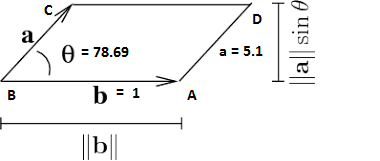What is the area of the polygon formed by the ordered pairs (1,1), (2,1), (1,-4), (2,-4)?
2 Answers
5 square units
Explanation:
See the graph
So the polygon is a paralelogram whose sides are 1 and 5
Thus the area is
Area of parallelogram ABCD is
Explanation:

Sides A(1,1), B(2,1), C(1,-4), D(2,-4)
Since opposite sides are equal, it can be a rectangle or a parallelogram.
By finding the slopes of the equal sides, we can confirm the shape.
Slope
Slope
Since the
To find angle
Area of parallelogram ABCD is
